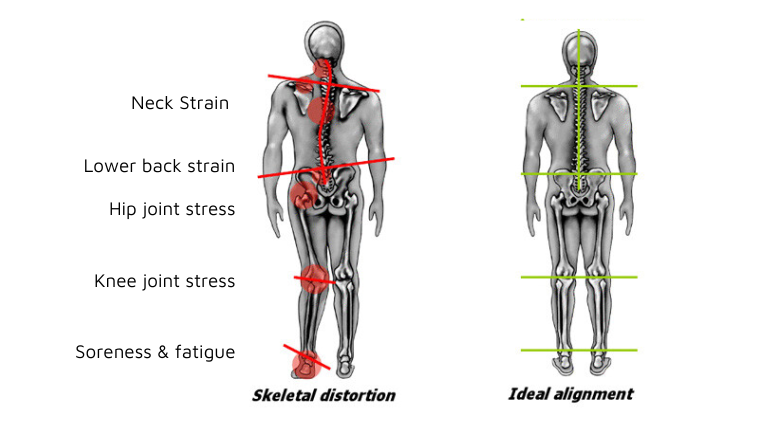
Is your head on straight? Why body alignment is important
Proper body alignment is the cornerstone of physical well-being. It not only enhances our appearance but also plays a vital role in overall health and comfort. From reducing the risk of injury to improving posture, alignment is the invisible force behind our daily movements. In this article, we’ll explore the significance of body alignment and how Pilates, with its focus on core strength and mindful movement, can be a powerful tool for achieving and maintaining proper alignment.
Why Body Alignment Matters:
- Reduced Risk of Injury: Proper alignment distributes forces evenly across our joints and muscles, reducing the risk of strain, overuse, or acute injuries. It’s like ensuring your car’s wheels are properly aligned for a smooth ride.
- Enhanced Posture: Good alignment supports an upright posture, reducing the likelihood of conditions like slouching, rounded shoulders, or anterior pelvic tilt. This not only improves aesthetics but also boosts self-confidence.
- Improved Breathing: A well-aligned body allows the diaphragm to function optimally, promoting deeper, more efficient breathing. This can be particularly beneficial for individuals with respiratory issues or stress-related breathing difficulties.
- Pain Management: Proper alignment can alleviate chronic pain in areas like the neck, shoulders, back, and hips. It can also help mitigate the discomfort associated with conditions like sciatica or herniated discs.
How to Spot Alignment Issues:
- Pain or Discomfort: Frequent aches, pains, or discomfort in your neck, shoulders, back, hips, or knees may indicate alignment issues.
- Uneven Wear on Shoes: If the soles of your shoes wear out unevenly, it can be a sign of irregular weight distribution due to alignment problems.
- Posture Problems: Rounded shoulders, forward head posture, or excessive curvature in the spine can indicate alignment concerns.
- Joint Stiffness: Stiffness in your joints, particularly when moving or after periods of rest, might be a sign of misalignment.
How Pilates Can Help?
Pilates is a versatile and effective approach to addressing alignment issues. Here’s how it can assist in achieving proper alignment:
- Core Strength: Pilates places a strong emphasis on core strength, helping you stabilize and support your spine, pelvis, and limbs.
- Balanced Muscle Development: Pilates exercises engage multiple muscle groups, fostering balanced muscle development and preventing overuse or underuse of specific muscles.
- Mindful Movement: Pilates encourages mindful and controlled movement. This heightened awareness helps you recognize and correct misalignment during exercises and, more importantly, in your everyday life.
- Flexibility and Range of Motion: Pilates exercises promote flexibility and improve your range of motion, allowing you to move more freely and with better alignment.
- Stress Reduction: Pilates can reduce stress and tension, which can contribute to alignment issues. A relaxed body is more likely to find its natural alignment.
Proper body alignment is a fundamental aspect of holistic well-being, affecting everything from your posture to your overall physical health. Addressing alignment issues through practices like Pilates can help you move with ease, reduce the risk of injury, and enjoy a pain-free, confident life. It’s a journey towards aligning not only your body but your overall wellness. For those with more severe symptoms and imbalances, we also offer fully accredited Structural Integration Therapy here in our Lane Cove treatment room, located in the studio.
Contact us to start your alignment journey with Pilates Connection today
#BodyAlignment #PilatesBenefits #WellnessJourney #PostureMatters #MindfulMovement



Sorry, the comment form is closed at this time.